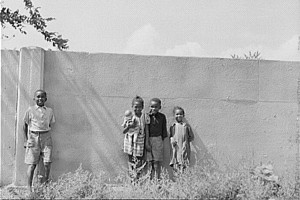
Melissa King of Better Online through Content Moderation, makes the point content controls exist to better the lives of those that use the media, not changing everything that could happen, but it allows for people to have privacy, less anxiety especially for those with PTSD, and to choose what they want to look at or not. The only bad thing here as she states in her argument is what the people that use content control have to deal with, with all the criticism of the opposition referring to them as “Weak” and “Too sensitive” (Melissa), pressuring them to basically go to extreme lengths they are not used to and basically bully these people; which is why having content controls allows for a barrier to exist from this type of violence for these people even more so for those with PTSD to have less anxiety from this. Even though it does not completely erase the problem, content controls should be used. (1)
Those against content control are the ones that think the ones “too sensitive” completely exaggerate the abuse they receive; this is completely similar to Exposure Therapy, which is basically when a person is exposed to whatever creates the stress each time to trigger less and less anxiety; this being completely erroneous or out of hand for a person especially with PTSD since it could worsen their condition of anxiety instead of making it better. She also talks about the myth where young people today are not as sensitive to many issues, so they are able to deal with this content and be more open to it, but really are not. This problem of bullying online creates PTSD, and a repeated bullying makes it worse. (2-3)
Melissa King talked about blocklists how they are being more used especially against hater groups, but many users are completely against the blocklists using legal action. Like Randi Harper made clear that having a blocklist can make a person become flagged for using one and can limit ones accesses to different Gamergate on Twitter. For a person to use a blocklist they have to find one used for their needs. People against blocklists are not the harassers but they see defense by targets of the bullying as the bullying itself, so in this case blocklists are not considered good due to the forcing of one’s internet experience to another’s. (3)
King states these points of views do not do a good job at showing how horrible the bullying is online. She talks about how bad it is to the point where in Gamergate they take pictures and post info of the users threatening them to not say a word; so it is hard to see which one is the abuser and which one is the abused. (4) The abuse is not something uncommon, and it happens a lot to women especially in areas where there are mostly men; a lot more of this abuse happens more frequently in tech areas and video game culture, with harassment being very frequent, PTSD can occur. With the amount of proof that exists of this abuse, women do not have to keep talking about it and people should not even think to think why to have block and content controls. King says the best option available is for individuals to control the way the internet works for them. (5)
In almost the end, Melissa talks about how those people that are against blocklists, those that take legal action against those that choose to have content control, or any judgment against those people that decide to have that privacy, are disrespectful to the personal choices those other people make. She said everyone should make their own choices, but the disrespectful people will never change in pressuring others in these horrible situations. (5)
Melissa King concluded saying every person is different and thinks differently so not everyone will feel the same way about everything. Every individual should take into account what they need for themselves. Not every person can deal with certain situations. She feels no one can force anything on someone else, that this is a type of violence that exists from the anti-content control people making misinformed opinions that do not help others with their mental state but allow for more online abuse. (5)
King, Melissa. “Better Online Living Through Content Moderation.” Model View Culture. 14 October 2015. Web. 5 March 2016.


